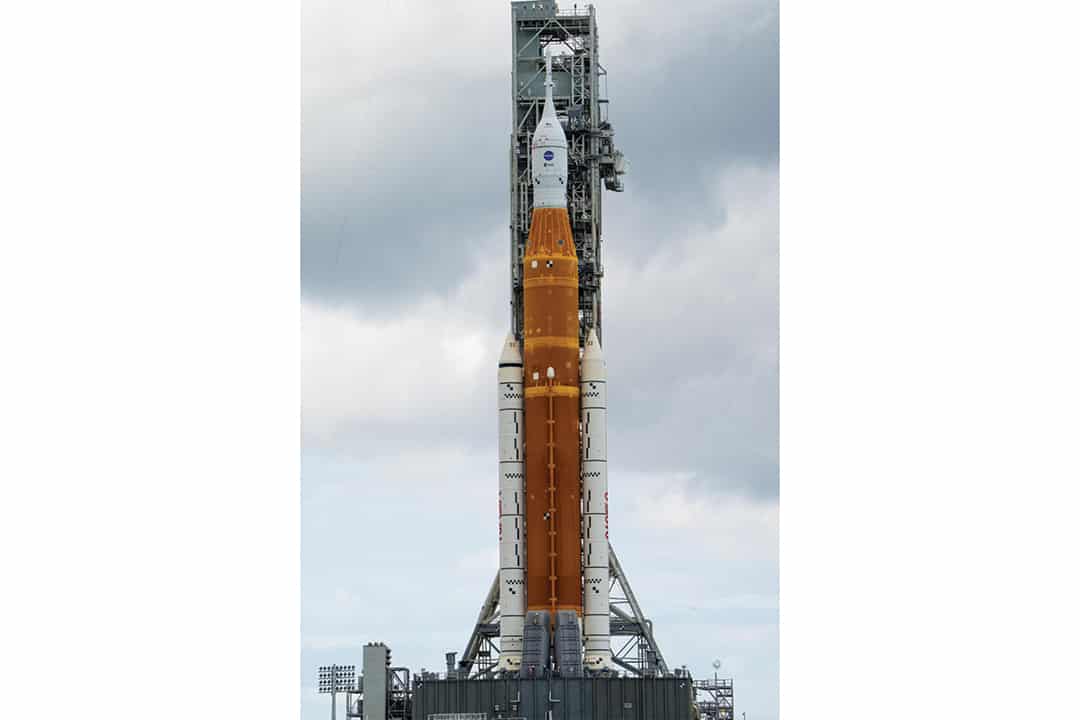When the Artemis I mission launches and the Space Launch System (SLS) rocket finally takes off from the Kennedy Space Center, it will set in motion an approximately three-week mission aimed at furthering human progress toward exploring space.
The NASA mission, originally planned to launch on August 29, will be an unmanned flight that tests technology that may eventually take us to the moon. If all goes well, the Orion spacecraft will go further past the moon than any other spacecraft intended for humans, including Apollo 13.
Mission goals
The main goal of this mission is to test the SLS rocket, as well as other pieces of technology that will hopefully be used in future space missions. The Orion spacecraft will travel close to the lunar surface and then propel itself into a multiple day orbit of the moon in order to collect data.
Furthermore, the Orion spacecraft will require adequate protection from the potential dangers that come with reentering Earth’s atmosphere — including the capsule heating up past 2,700 degrees Celsius — as well as the protocol for retrieval post-landing. The spacecraft will be thoroughly inspected when it comes back to Earth in order to evaluate how it has performed.
Artemis I is the first step in what will hopefully be a three-part mission. If all goes to plan, then Artemis II and III will follow suit, with hopes of landing astronauts on the moon by 2026. The goals for these future missions will include exploration of the Moon’s south pole. NASA has located over a dozen sites that may be suitable landing areas for these missions.
The rocket
According to former acting NASA administrator, Steve Jurczyk, the SLS rocket is the most powerful rocket NASA has built to date. The rocket will help send the Orion capsule, which is designed as a prototype for a possible “home away from home” for future astronauts and space travellers, into space.
Jurczyk’s claims are no joke — the rocket will be filled with over 500,000 gallons of liquid hydrogen to fuel its four engines. Together with the SLS’ rocket boosters, this will provide an estimated 8.8 million pounds of thrust. This type of power is what will allow the rocket to travel as fast and far as scientists hope — at speeds of almost 40 thousand kilometres per hour.
Faux-astronauts?
No humans will ride onboard for the first Artemis mission. Instead, three manikin passengers will be aboard the Orion capsule, two of which will serve to research the unique effects of radiation on women’s bodies during lunar flight. The materials that make up these two manikins are designed, among other things, to mimic the soft tissues of human beings.
To test zero-gravity conditions, a Snoopy doll will also ride along. Without astronauts, Snoopy will serve as an visual indicator of when the Orion spacecraft has reached weightlessness. This isn’t Snoopy’s first time in space, either; his first flight was back in 1990 during the STS-32 mission! Several other toys — including a Shaun the Sheep puppet and four LEGO minifigures — will join the crew in hopes of getting young students interested in astronomy.
The launch
As you may know, the first launch attempt was initially scheduled for August 29, but a problem with engine temperatures halted its journey. One of the four rocket engines failed to reach the right temperature range for liftoff, but NASA engineers were quickly on it and are looking for additional information about the problem. Another launch scheduled for September 3 was also scrubbed due to a fuel leak. The rocket won’t launch until everything is just right — meaning that takeoff could potentially take longer than expected.
Since most of us won’t be able to watch the eventual launch in person, the Artemis Real-Time Orbit Website (AROW) will allow space enthusiasts to engage with the mission and watch its updates in real time. Even if you only catch a glimpse of the mission launch, you’ll be witnessing an incredible piece of scientific history — one that may open new doors for astronomy and physics.


